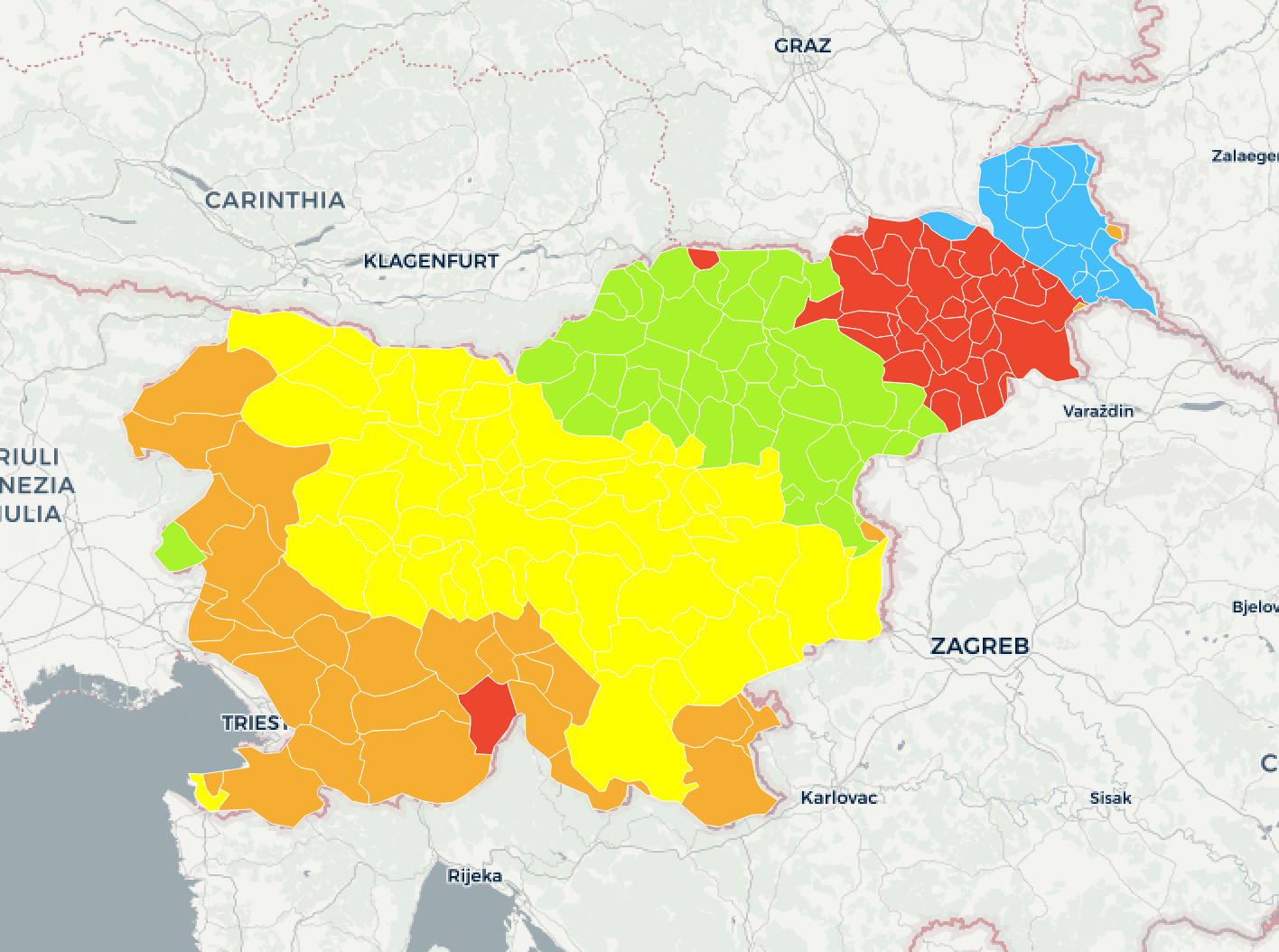
Slovenian Regions by Surname: Ridiculously Simple, Delightfully Informative
This week, we’ve been busy: it’s the last week before holidays, students are getting restless and it’s time for something a little more relaxed. Same school (Primary School of Alojzij Šuštar in Ljubljana), same topic (surnames), but different subject (geography) and grade (9th).
Compared to the younger students with whom we had fun with surnames two days ago, the older ones know a lot more, so the conversation went a little differently.
We asked the students what the surname of Isaac was, and they told us the surname of one of their classmates. No, not that Isaac. Then another student said the last name was Newton. No, we didn’t mean that one either, although Issac Newton rules, not to mention his laws. (The class responded with disapproval. Who would have thought.) We finally explained what we had in mind was the biblical Isaac, and it quickly became clear that the problem with the question “What was the surname of Isaac?” was not just in the fact that it was difficult to explain which Isaac, but also in the fact that Isaac didn’t really have a surname. (The students suggested we could call him “Isaac, the son of Moses”, which could work, if his father’s name wasn’t Abraham.)
We learned that surnames are needed because there are four Nika’s in the class, and one of the students also explained how Russian names are patronymic, meaning they add the father’s name to personal names (the middle name is created by taking the father’s name and adding the suffix “-vich” for men and “-vna” for women.)
The conversation about surnames deriving from occupations also took a completely different track than in the lower grades, as some students already know a little German, from which many Slovenian surnames are derived. Well, they also did a bit of guessing. As an example of a surname deriving from an occupation, someone suggested Schumacher (a German surname formed from “Schuch”, a shoe, and “macher”, maker - “shoemaker” in English and “čevljar” in Slovene. There is no one in Slovenia with the last name name Čevljar, but the surnames derived from its German version - like Šuštar, Šuštaršič, Šušteršič are among the most common ones in the country) - so we challenged the students to think of a Slovenian version of this surname. It took them quite a while to figure out that it’s been hiding in plain sight - in the name of their school. Alojzij Šuštar essentially means Alojzij the Shoemaker. For the surname Hafner (another surname of German origin), we helped them a bit to remember that there is a famous English wizzard with an English version of this surname, a hint which quite quickly brought us to Potter.
We then picked up the pace a bit to get to the surnames derived from places or regions, listing all the Dolenc, Korošec, Gorenjc, Kranjc… (Dolenjska, Koroška, Gorenjska, Kranjska are the names of Slovenian regions). We also looked them up on the map, same as two days earlier. Here too, it showed that the students had just recently been learning about the geography of Slovenia - and the teacher also helped us find the border between the Hungarian and the Austrian part of the Austro-Hungarian empire.
Now to the observations.
Once again, we ran out of time. After the lesson, the teacher commented that while the introduction was compelling, its length negatively affected the part of the lesson dedicated to geography. Also, some students - well, let’s just point the finger at the boys in the back - were getting a bit too animated.
And again, we did not manage to say anything about clustering.
The geography teacher also added that it was interesting to see how well the borders between the regions were visible - first, of course, between Pomurje and the rest of Slovenia, then between Prekmurje and Prlekija, and also between Štajerska and Kranjska. In his words, it is interesting “how this can be seen so well from an idea as ridiculously simple as surnames”. The teacher also added that it would be interesting to look at historical data, for example the last census from the Austro-Hungarian period, where these borders would be even more clearly defined. And that the map likely also expresses the fact that before 1848, people did not have the personal freedom to just move about and live wherever they wanted. Clearly, we will need to add some history to this activity.
And a totally personal observation: as a teacher, I obviously have a lesson prepared in advance. And sure, no plan holds up in the field when students respond with answers or questions than we didn’t anticipate. But it is still possible to design a lesson that has some sort of structure, a common thread, and where I at least roughly say what I intended. These surnames, however, are a challenge. After three attempts in the classroom, I have grown to like the topic more and more, but I also find it more and more challenging, because the structure of the lesson keeps falling apart, and I can’t seem to manage to put it back together. In all age groups, the topic of surnames has proved to be exceedingly engaging, and in grade 9 - and to an extent, also in grade 7 - discipline became a problem, when students could no longer distinguish between relevant and unnecessary comments. An overwhelming student response - whether disciplined or, even worse, chaotic - can be difficult to manage.
If we ever make these activities into something longer than school lessons, this one will surely be the first candidate.